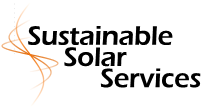New emerging approaches to Solar PV
Solar PV in Australia
While regulatory support is being wound back as solar Photovoltaic (PV) approaches grid parity, new business models and financing approaches are emerging. The combination of rapid deployment, decreasing solar system prices and high electricity retail prices has hastened progress towards grid parity for solar PV in Australia.
As markets move towards grid parity and feed-in tariffs are wound back, financing structures and business models are changing as can be seen in the recent RET review by the Abbott government and the expected aftermath. This imposes increasing pressure on PV companies to focus predominantly on building solid cases based purely on self-consumption for their residential or commercial customers.
In the US the tax credit incentive and cheap finance have led to an increase in popularity of solar products based on third party ownership, like Solar Leasing or Solar Sponsoring / Power Purchase Agreements (SPPA). In California over 70% of all new solar systems are installed based on these new approaches and they are just landing in Australia.
This trend is now arriving in Australia with retail grid parity being a reality in some areas, solar energy resources that are the envy of some much larger European markets, and the commercial-scale sector being largely untapped.
The most common arrangement is the Solar Sponsoring model, which sees the developer build, operate and retain title to the PV system on the basis of revenues from a long-term Power Purchase Agreement with the ‘host.’ In this win-win situation, the developer enjoys stable revenues and income from Renewable Energy Certificate sales while the host benefits from a below-retail PPA rate, protection from peak pricing events and, often, a minimum output guarantee.
In circumstances where PPA models cannot be offered, solar leases are an attractive alternative. In a similar arrangement to capital plant leasing, the developer again retains title to the PV system, which is leased to the host for a fixed monthly fee. Electricity generated by the system is consumed by the host and additional electricity is generally bought at the prevailing retail tariff.
A key difference between PPA models and leases is the allocation of energy production risk. The host will benefit from leasing structures only if the monthly lease payments are less than monthly savings in electricity bills. If the production estimate on which the lease price is based proves inaccurate, consumers may pay more per unit of electricity than under a PPA model – or if electricity is sourced from the grid. However, this risk can be mitigated if a minimum energy output guarantee is included.
Third-party ownership models present a significant opportunity for accelerated PV deployment and cost reductions in Australia. Solar Sponsoring is not affecting companies’ cash flow while providing instant savings and long-term security against retail price rises. With all the risks lying on the third-party, the only real barrier is a long-term commitment to buy the clean electricity. If the premises are leased, this approach to solar may prove attractive to the landlord as well, since they enjoy the added value of the PPA contract for their tenants to save on electricity cost and gain ownership of the system after the contractual period.
If companies are confident that they will remain in their current premises, adding solar in this way is worth considering and the first companies provide such offerings now in Australia.
>> Go back to News
Tags: feed-in tariff, ppa, solar australia, solar leasing, solar pv, solar systems
Trackback from your site.

